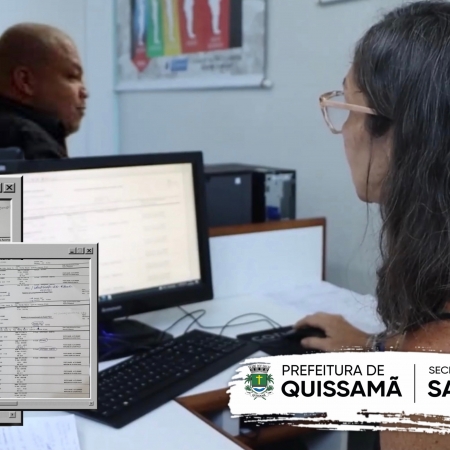القصص

أهمية استخدام الأدوات لمواجهة السمنة
بمناسبة اليوم العالمي للسمنة 2022 ، دعا فريق السمنة البرازيلي خبراء ومنظمات السمنة لتبادل خبراتهم في الوقاية من السمنة ومكافحتها في البرازيل. هذه واحدة من قصصهم.
أنا أخصائية تغذية مسؤولة عن المنطقة الفنية للغذاء والتغذية (ATAN) في كيساما. أقوم بتنسيق غرس ومتابعة ورصد وتنفيذ خط الرعاية الخاص بزيادة الوزن والسمنة، بالشراكة مع استراتيجية صحة الأسرة. الهدف هو إنشاء شبكة رعاية متكاملة تعزز تغيير السلوك والالتزام بعادات نمط الحياة الصحية.
ما هو الهدف من هذا المشروع؟
السمنة مشكلة صحية عامة ويجب رصدها حتى نتمكن من العمل بطريقة متكاملة لعكس مسار هذا الوباء. من نقطة الانطلاق هذه، بدأنا في تنفيذ النظام البلدي "VICTOR"، بهدف رسم خرائط للمستخدمين المصابين بالسمنة والأمراض المصاحبة لها حسب الوحدة الصحية. تم تضمين مؤشر كتلة الجسم، ومخاطر الخصر، ووجود أمراض مصاحبة، والاستشارات، والمهنيين الذين تمت استشارتهم في النظام. وقد سهل ذلك تحديد المستخدمين وعزز شبكة دعمهم.
السمنة أمر معقد، ويجب أن تكون الفرق الصحية على دراية وتدريب على استقبال مستخدمي الوحدات الصحية وإجراء الإحالات المناسبة. وقد أتاح تطبيق النظام لكل فريق من فرق الوحدة الصحية تحديد الأشخاص الأكثر عرضة للخطر وفقًا لمؤشر كتلة الجسم والأمراض المصاحبة، وكذلك الأفراد الذين لم تتم متابعتهم ولكن من خلال البحث النشط، تم الترحيب بهم وإحالتهم إلى الوحدة. كما أتاحت أيضًا إمكانية تصور عدد الاستشارات والمتابعة المهنية، لتشخيص احتياجات كل مستخدم بشكل أفضل.
ما هي المنهجية المستخدمة؟
تم تنفيذ خط الرعاية في أغسطس 2019. تم بناؤه مع فريق توجيهي باستخدام نهج تشاركي يشجع على الإنتاج المشترك للمعرفة والعمل الجماعي، حيث تم تحديد الإجراءات القائمة والضرورية. بعد تنفيذه، تم تدريب الفريق والقطاعات بأكملها وإبلاغها بالتنفيذ والتدفقات والبروتوكولات.
بعد ذلك، بدأنا الرصد باستخدام SISVAN كأداة إرشادية للملف الغذائي للسكان. كان من الممكن رسم خريطة لعدد ودرجة السمنة لكل وحدة صحية، ولكننا شعرنا بالحاجة إلى أداة أكثر تفصيلاً تحتوي على معلومات يمكن أن تساعدنا على العمل بطريقة أكثر حسماً للحد من السمنة. ناقشنا مع أحد المتخصصين التقنيين المسؤولين عن نظام VICTOR البلدي، كيفية تنفيذ النظام بحيث يكون من الممكن إنتاج معلومات ذات صلة بمكافحة السمنة.
ما هي النتائج التي تم الحصول عليها؟
تم تنفيذ نظام VICTOR البلدي الذي يصدر البيانات إلى E-SUS (نظام الإخطار الصحي) مع التقارير المطلوبة خلال عام 2021. من خلال التقارير التي تم إنشاؤها بواسطة نظام VICTOR، كان من الممكن عرض القائمة الاسمية للمستخدمين المعرضين لخطر التغذية وتصنيف المخاطر بسبب الأمراض المصاحبة حسب الوحدة الصحية. وقد أتاح ذلك إمكانية فتح جدول أعمال محدد لهؤلاء المستخدمين.
تتم دعوة المستخدمين الذين لم تتم متابعتهم بعد إلى تحديد موعد في استراتيجية صحة الأسرة (FHS) والمشاركة في الأنشطة التثقيفية التي تقام شهريًا في الوحدة الصحية.
وقد سمحت هذه الأداة الجديدة بإلقاء نظرة متأنية على هذه الفئة من السكان، بالإضافة إلى تحديد استراتيجيات العمل في كل إقليم لالتقاط ورصد واستقبال هؤلاء المستخدمين. بالإضافة إلى مراقبة المستخدمين المعرضين لخطر التغذية، لدينا الفرصة للتدخل لمنع تدهور الحالة الصحية لدى الأفراد الآخرين الذين يعانون من مخاطر صحية أقل.
كيف أثرت هذه النتائج على حياة الأشخاص الذين يعانون من السمنة؟
ما أمكن التحقق منه هو أن تطبيق خط الرعاية قد أتاح إلقاء نظرة دقيقة وإنسانية على هؤلاء المستخدمين الذين يعانون من مشاكل صحية. وتُعد المراقبة الغذائية أداة أساسية لملاحظة هذه المجموعات من الأشخاص المعرضين للخطر. أثرت البيانات التي أتاحها النظام على الفرق وجعلتهم على دراية بالمشكلة.
إن أهمية الترحيب بالمستفيدين وإحالتهم أمر أساسي للنجاح في تغيير سلوك الأفراد. نحن نعلم أن الكثيرين لا يزالون لا يعتبرون السمنة مرضًا، ولا يزال الوصم والتسلط واضحًا جدًا.
تهدف هذه الأدوات إلى دعم المديرين والمهنيين الصحيين في عملية تنظيم وتقييم الرعاية التغذوية، ودعم تخطيط الإجراءات المتعلقة بتعزيز الصحة. وسيؤدي التحليل الدائم للوضع الصحي للسكان إلى تنظيم وتنفيذ ممارسات أكثر ملاءمة لمواجهة المشاكل.
بقلم ألبا أبرو
بالتعاون مع





